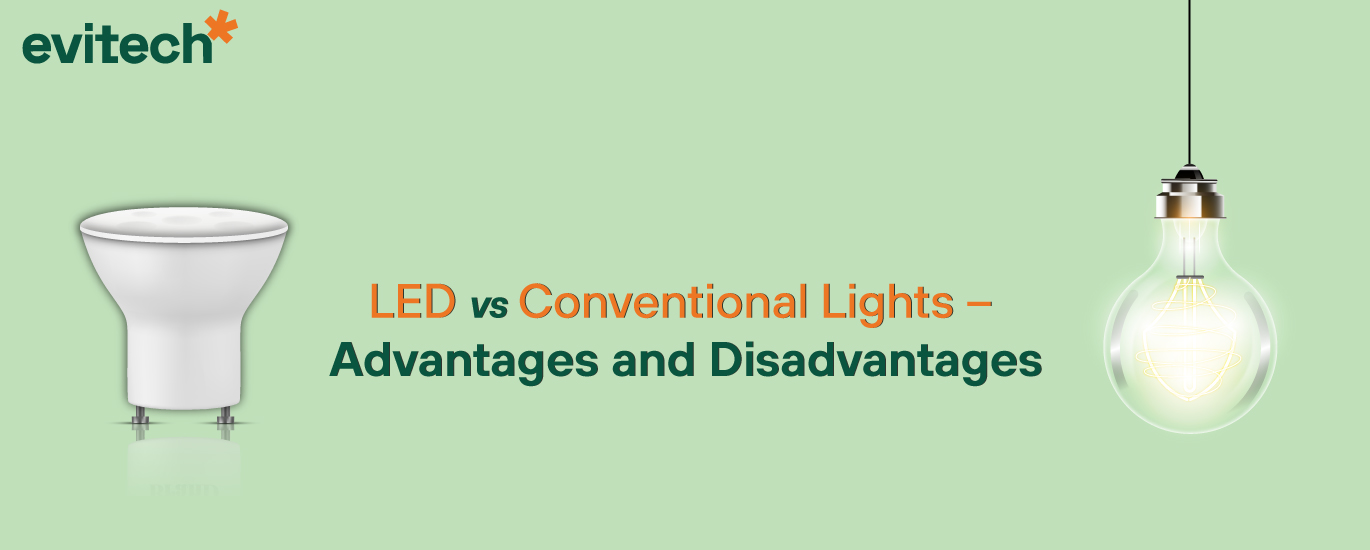LED vs Conventional Lights – Advantages and Disadvantages
LED lighting has become the main option for large shopping malls, office buildings and financial institutions.
However, conventional lighting is still very popular, especially in rural areas.
So, what kind of light would you choose if you wanted to buy light bulbs?
The world manufacturers of luminaires suggest in their catalogues that conventional light has been discontinued, proposing to replace it with LED light. However, in the inventories of their warehouses, there are still conventional luminaires.
Here we will compare the LED light with the conventional light, and you can choose the best option according to your needs.
Which to choose? LED vs Conventional Lights
There is a wide variety of models for light bulbs, but in general, we have to choose between LED light and conventional light. Unless you are familiar with the technical language of lighting, choosing lamps and fixtures can be challenging.
Here we will present a series of advantages and disadvantages of both options, which will help you choose the most convenient one.
Energy Consumption
When we talk about energy consumption, we refer to energy efficiency, that is, how much each type of bulb spends to emit a certain amount of light. LED light takes advantage because its consumption is much lower than conventional light. An example of this is Christmas lights.
For a better explanation, while an LED transforms the energy consumed by 80% to 90%, conventional light only transforms 10% to 15%. By using LED light, the savings in your consumption will be between 80% and 90%.
The Power
The power of electronic equipment is measured in watts (W), and the amount of visible light projected on a surface is measured in lumens (lm). Using this data as a reference, you will be able to understand the equivalence of watts.
Generally, a 10W LED bulb produces the same lumens as a conventional 60W bulb.
In other words, LED bulbs produce 6 times more light per watt consumed than incandescent bulbs.
The Technology Used
A conventional light bulb generates light by heating a metal filament made of tungsten or tungsten. Due to the Joule effect, the electric current circulates through this filament, generating light and heat.
Around 15% of the energy that circulates through this filament is transformed into light and the rest into heat.
On the other hand, an LED bulb uses light-emitting diodes as its lighting source. These lamps are made by grouping diodes of greater or lesser density, determining the light power.
Although the efficiency of an LED spotlight may vary depending on the design and age of the product, it will always be above the conventional light bulb.
Durability
This characteristic refers to the time the bulb works at full capacity, conserving all its efficiency. If we talk about a conventional light bulb, we will have a durability of 1,000 to 2,000 hours.
However, an LED light bulb will give you a useful life of between 20,000 and 50,000 hours.
The difference is very marked between LED and conventional light in terms of durability. Already here, you will have a reference of which of the two has greater advantages than the other.
Let’s talk About the Price.
When we buy light bulbs, the price difference is a determining factor. We almost always choose the cheapest, even if its consumption is higher and its useful life is shorter.
In this case, the LED bulb is the most expensive at the time of purchase. The price difference will depend on the products being compared, but LED lighting more than doubles the initial investment in many cases.
However, thanks to their low power consumption, LED luminaires will last longer, and it can take more than a decade before the first replacement.
LED light has considerable advantages over conventional light. However, there are cases where the price is the limiting factor. It is recommended to evaluate all the details of each type of lamp to reach a better decision.
Latest Post
- Why do LED Spotlights Burn?
- What is the electricity consumption of LED Christmas lights?
- What are LED lighting towers, and What are their Applications?
- Using Natural Light in LED Lighting Designs
- Use of LED Lights in Domestic Houses
- Three Ways to Apply LED Light in Buildings
- Savings in Air Conditioning with LED Lighting
- Replacement of Halogen Spotlights by LED
- Recommendations when Buying LED Lights for Cars
- LED Lighting Connected to the Internet: A Promising Technology


